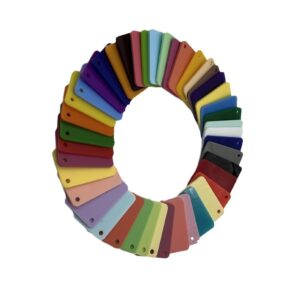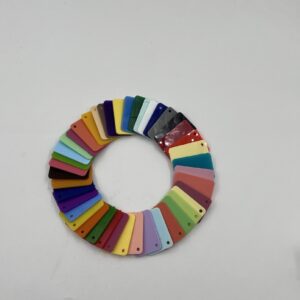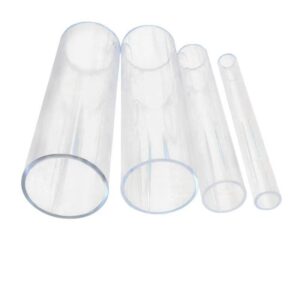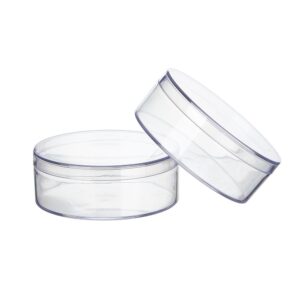Summary
Acrylic display cases are specialized protective enclosures designed to showcase and preserve valuable items across various contexts, including collectibles, electronics, art, and memorabilia. Notable for their exceptional clarity, durability, and lightweight nature, acrylic cases offer a visually appealing solution for both amateur and professional collectors. Their versatility allows for customization to meet specific display needs, making them a popular choice in retail, museum, and private collection environments.
The significance of acrylic display cases lies not only in their aesthetic enhancement of showcased items but also in their robust protective qualities. Acrylic is approximately seventeen times more impact-resistant than glass, making it particularly suitable for safeguarding fragile artifacts from physical damage and environmental factors such as dust, moisture, and UV exposure. This combination of protection and visibility is crucial for institutions and individuals seeking to maintain the integrity of valuable possessions while providing an engaging viewing experience.
However, the use of acrylic cases is not without its challenges. Users must navigate issues such as susceptibility to scratches, potential yellowing over time, and the need for regular maintenance to preserve clarity and appearance. These limitations highlight the importance of selecting high-quality materials and employing proper cleaning techniques to ensure the longevity of acrylic displays. Additionally, careful handling and environmental considerations are vital in preventing damage and maintaining the visual impact of the cases.
The design and implementation of acrylic display cases have gained widespread recognition in renowned institutions like the Brooklyn Museum and MoMA, showcasing their effectiveness in protecting and enhancing the presentation of priceless artifacts. As the demand for aesthetically pleasing and durable display solutions continues to rise, acrylic cases remain a prominent choice for various applications, solidifying their place in the realm of valuable item protection and display.
Table of Contents
Types of Valuables
Collectibles
Acrylic display cases are particularly well-suited for showcasing a diverse range of collectibles, including figurines, model trains, and rare antiques. These cases not only protect the items from dust and damage but also enhance their visual appeal, making them an ideal choice for both amateur and professional collectors. The versatility of acrylic allows for both in-stock and custom-made options, catering to the specific needs and dimensions of various collectible items.
Electronics
Acrylic display cases are also effective for protecting high-value electronics, such as smartphones and gaming consoles. These cases offer a secure way to display electronic items in retail environments, drawing customer attention while safeguarding the products from potential damage. The durability of acrylic makes it a practical choice for protecting sensitive electronic devices while allowing for easy viewing.
Art and Sculptures
For art pieces and sculptures, acrylic display cases provide an elegant and secure solution. They can accommodate 3-dimensional artwork and are often utilized in museum settings to preserve and highlight valuable artifacts. Wall-mounted acrylic boxes and display cases crafted specifically for sculptures help in conserving the pieces while offering a clear view to observers. This is essential for galleries and collectors who wish to showcase their artworks without compromising on protection.
Memorabilia
Sports memorabilia, including jerseys and signed balls, can benefit from dedicated acrylic display cases designed for these specific items. Such cases often come with customized bases to ensure that the displayed items are both centered and secure, making them a popular choice among sports enthusiasts and collectors. The use of acrylic allows for a clear view of the memorabilia while ensuring long-term protection.
Antiques and Artifacts
Antique items and historical artifacts are another category where acrylic display cases excel. These cases offer essential protection against environmental factors such as dust, moisture, and physical contact. They are particularly valuable in museum settings, where preserving the integrity of historical items is crucial. The clarity of acrylic allows for unobstructed viewing, thereby educating the public about the significance of the displayed items while ensuring their safety.
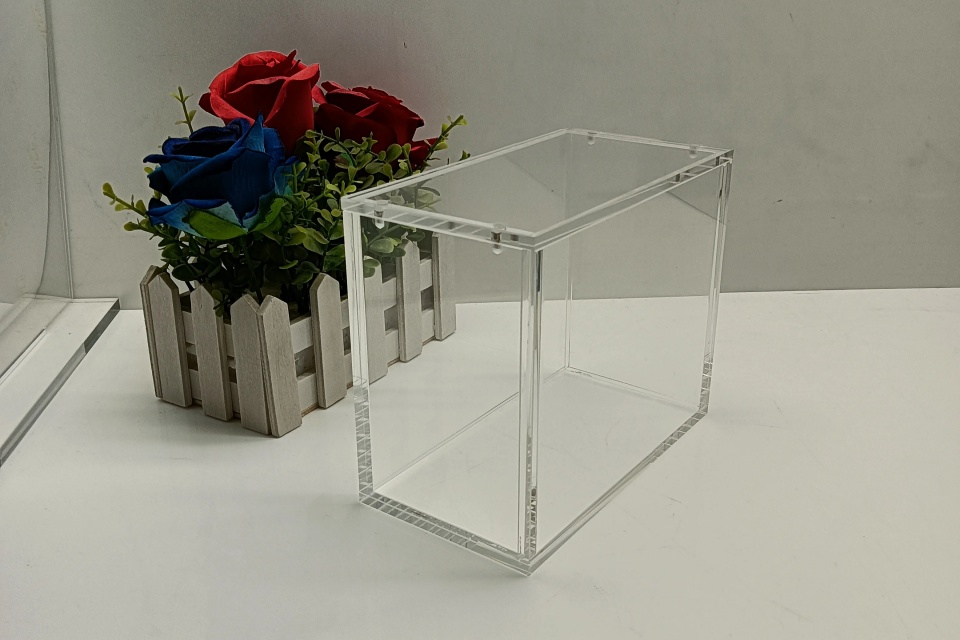
Acrylic Case Design
Overview of Acrylic as a Material
Acrylic is a durable, transparent, and versatile material that is ideal for custom display cases. It stands out for its superior clarity, lightweight nature, and flexibility, which allows for better impact absorption compared to other materials like plastic, metal, and glass. Custom acrylic cases not only protect valuable items but also enhance their visual presentation, making them appear premium.
Key Steps in Designing an Acrylic Case
Designing a custom acrylic case involves several important steps: measuring the item, selecting the appropriate thickness, and choosing the right color.
Measurements
Accurate measurements are crucial for creating a properly fitted case. It is essential to measure the length, width, and height of the items to be displayed. The dimensions provided should reflect the interior of the case, with the overall size being increased by 1 inch on each side to account for the thickness of the acrylic. For example, if an item measures 30 inches in length, 15 inches in width, and 20 inches in height, the interior dimensions will be $30″\times15^{\prime\prime}\times20″$, while the exterior dimensions will be $32″\times17^{\prime\prime}\times22^{\prime\prime}$.
Thickness
The thickness of the acrylic is vital for ensuring durability.
- $1/8$ inch: Suitable for small cases with a total dimension (length + width + height) under 40 inches.
- $3/16$ inch: Ideal for medium-sized cases between 40 and 85 inches.
- $1/4$ inch: Necessary for large cases over 85 inches. Selecting the right thickness guarantees that the case is stable and can adequately protect the items inside.
Color Options
Acrylic cases are available in a variety of colors, each serving a different aesthetic purpose.
- Clear: Provides full visibility, making it perfect for showcasing items.
- Black: Offers a modern look, ideal for displaying items that contrast well against a dark background.
- White: Contributes to a clean aesthetic, especially suited for vibrant items. Choosing the right color can enhance the presentation of the displayed items and should be based on the characteristics of the items themselves.
Customization Options
One of the most significant advantages of acrylic cases is the extensive range of customization options available. This includes features like engraving, which can add a personalized touch to the display. Other customization aspects may involve selecting specific bonding methods and materials, allowing for tailored solutions that meet individual preferences and needs.
By thoughtfully considering these design elements, one can create a custom acrylic case that not only fits the items perfectly but also enhances their overall display, ensuring that they are both protected and beautifully showcased.
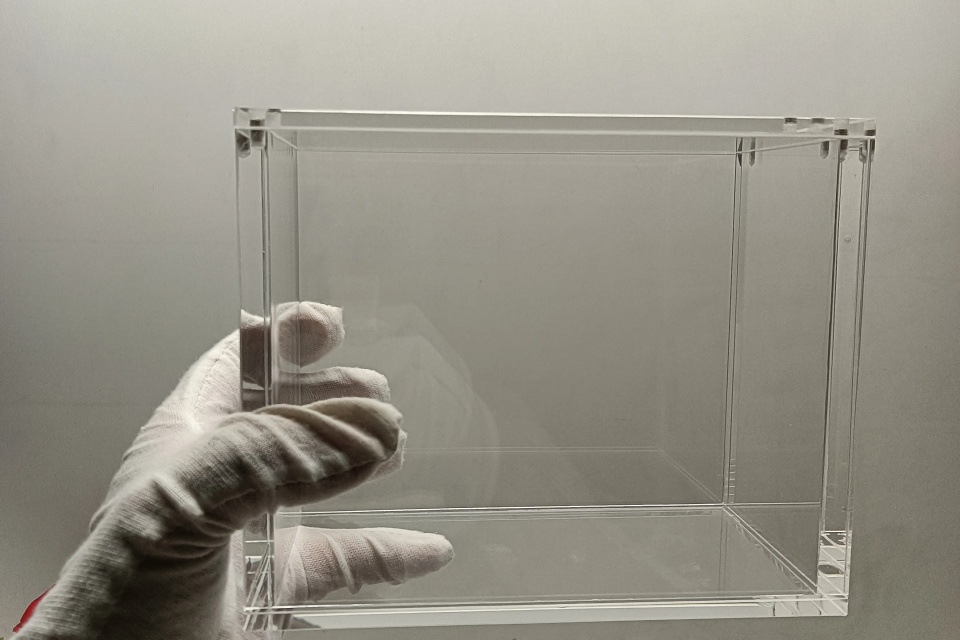
Best Practices for Using Acrylic Cases
Acrylic cases are popular choices for displaying and protecting valuable items due to their clarity, lightweight design, and durability. To ensure optimal performance and longevity, it is essential to follow certain best practices when using these cases.
Cleaning and Maintenance
Maintaining the clarity and appearance of acrylic cases is crucial. Regular cleaning helps prevent the accumulation of dust and debris, which can lead to scratches. It is recommended to use a soft, non-abrasive microfiber cloth along with a solution of mild dish soap and warm water for routine cleaning. For more stubborn spots, a vinegar solution (1:1 ratio) can be effective without damaging the surface. It is important to avoid ammonia-based cleaners, as they can cause clouding and discoloration. Additionally, regular inspections for any scratches or damage can help maintain the display’s visual impact.
Handling with Care
To avoid scratches and other damage, careful handling of acrylic cases is essential. Sharp or rough objects should be kept away from the acrylic surface, as contact can lead to visible scratches. When moving or transporting acrylic cases, it is advisable to do so gently and securely to prevent accidental impacts. Moreover, using protective coatings, such as anti-scratch and UV protective coatings, can add an extra layer of protection against potential abrasions and environmental exposure.
Environmental Considerations
Acrylic cases should be placed in environments that minimize extreme temperature changes and direct sunlight, as these factors can lead to warping and discoloration over time. Choosing locations that are less likely to accumulate dust or debris can also help preserve the clarity and quality of the acrylic display.
Storage and Display
When not in use, it is beneficial to cover acrylic cases to protect them from dust and environmental factors. Additionally, ensuring that items within the case are properly secured can prevent movement that might lead to scratches or damage during transportation.
By following these best practices, users can significantly extend the lifespan and visual appeal of acrylic cases, making them a worthwhile investment for showcasing and protecting valuable items.
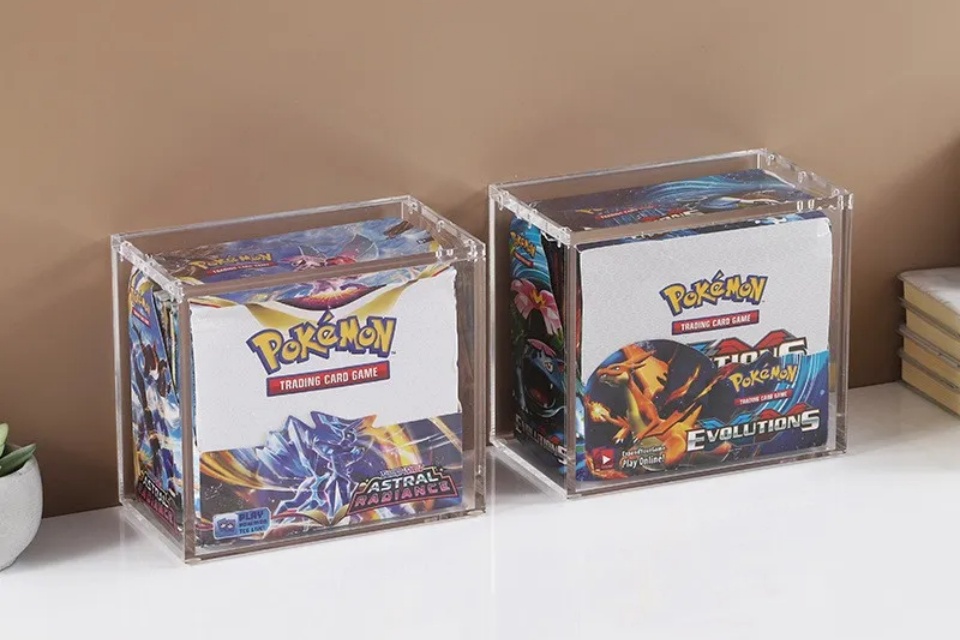
Advantages of Acrylic Cases
Custom acrylic cases offer numerous benefits that make them an excellent choice for protecting valuable items across various settings.
Superior Protection
One of the primary advantages of acrylic cases is their robust protective qualities. Acrylic is known for being up to seventeen times more impact-resistant than glass of the same size, shape, and thickness. This shatter-resistant material can withstand impacts and falls without breaking easily, making it ideal for safeguarding delicate or valuable items from physical damage.
High Optical Clarity
Acrylic’s transparency is another standout feature, allowing for crystal-clear visibility of the contents while maintaining an elegant display. This clarity ensures that collectibles, fine jewelry, and important certificates are showcased effectively, enhancing their aesthetic appeal. Moreover, the lightweight nature of acrylic makes it easier to handle and transport than glass, which is particularly beneficial for trade shows and exhibitions.
Versatile Design Options
The versatility of acrylic allows for a variety of design options, accommodating different aesthetic preferences and functional requirements. Custom acrylic cases can be tailored to fit specific items, ensuring optimal protection and display. Additionally, they can incorporate features such as locking mechanisms for added security and innovative designs that enhance user convenience.
Antimicrobial and UV Sterilization Properties
In specialized sectors like healthcare, acrylic cases excel due to their ability to undergo UV sterilization and maintain antimicrobial properties, making them ideal for protecting medical devices and ensuring hygiene standards are met. This feature is particularly valuable in environments where cleanliness is crucial.
Environmentally Friendly Options
With increasing awareness of environmental issues, sustainable practices in acrylic case production are becoming more prevalent. Options such as recycled acrylic and recycling programs help reduce the environmental impact, appealing to eco-conscious consumers.
Cost-Effective Solution
Acrylic cases are often more affordable than glass or metal alternatives, providing a cost-effective solution for protecting and displaying valuables without compromising quality. Their durability and low maintenance requirements further enhance their value over time.

Limitations of Acrylic Cases
Acrylic cases, while popular for their clarity and lightweight nature, have several notable limitations that users should consider.
Cost Considerations
While acrylic cases can be budget-friendly compared to glass, high-quality acrylic display cases tend to be more expensive to manufacture than other materials. The processing and molding techniques required for durable acrylic contribute to this increased cost. When budgeting for acrylic cases, users must weigh the need for quality and durability against their financial constraints, as cheaper options may sacrifice essential features.
Susceptibility to Damage
One of the primary disadvantages of acrylic is its susceptibility to scratches. Uncoated acrylic can easily be scratched, making it less suitable for environments with heavy handling or where contact is common. Although scratch-resistant variants are available, they may not provide complete protection, and accidental contact with sharp or rough objects can still cause visible damage.
Yellowing Over Time
Another significant concern is the potential for yellowing. Acrylic materials can degrade and discolor due to environmental factors such as UV exposure and aging. The oxidation processes that occur over time can lead to a yellowing effect, which diminishes the material’s clarity and aesthetic appeal. Various attempts have been made to mitigate this issue, but complete prevention has proven elusive, particularly under certain conditions.
Maintenance Requirements
Acrylic display cases require specific maintenance to preserve their appearance. Improper cleaning methods, such as using abrasive materials or harsh chemicals, can lead to scratches and further degradation of the surface. Regular upkeep is necessary to maintain clarity and prevent damage from accumulated dust and debris, emphasizing the need for careful handling and appropriate cleaning techniques.
Design Limitations
Finally, the design and layout of acrylic display cases can also pose challenges. Depending on the size and style, some acrylic cases may not fit well within specific retail environments or display areas, limiting their practicality for certain users. Additionally, larger acrylic fixtures can be cumbersome to transport, which may be an important consideration for business owners and collectors alike.
Case Studies and Examples
Freestanding Display Cases
Freestanding display cases are one of the most frequently utilized types of display cases in museum settings due to their versatility and aesthetic appeal. These cases, typically constructed from nearly 100% glass, stand at a minimum height of 75 inches and often feature full-height doors for easy access. They are designed with minimal base construction, usually between 4 to 6 inches, allowing for an unobstructed view of the displayed artifacts. The internal shelving systems within these cases can be adjusted or removed to accommodate various sizes of objects, making them ideal for showcasing both small artifacts and larger pieces like historical clothing or vintage items.
Museum Quality Specifications
Museum-quality display cases are constructed to meet specific standards that ensure the protection and preservation of the artifacts within them. These cases incorporate features that prioritize conservation, security, environmental control, design, and size. For example, UV protective acrylic sheets can be used to shield delicate items from harmful light exposure while still maintaining visibility. This high level of refinement in design and construction significantly enhances both the presentation and longevity of the displayed objects.
Acrylic Display Cases in Renowned Institutions
The choice of acrylic display cases has become prevalent in many leading museums and galleries worldwide. Institutions such as the Brooklyn Museum, MoMA, and The Metropolitan Museum of Art utilize high-quality acrylic cases for their exhibits. These cases offer a combination of crystal-clear visibility and robust protection, ensuring that priceless artifacts are displayed beautifully while being safeguarded from environmental threats and physical damage. The adaptability of acrylic allows for a wide range of designs that can complement the overall aesthetic of the museum, contributing to an engaging visitor experience.
Customization for Diverse Needs
Display cases can be tailored to suit various applications beyond traditional museum settings. For instance, wall-mounted acrylic cases are widely used in retail environments to showcase small goods like jewelry and accessories, maximizing space efficiency while providing a clear display effect that attracts customers’ attention. Additionally, rotating display cases are frequently employed in commercial displays and trade shows, facilitating easy viewing of products while enhancing the visual presentation.





